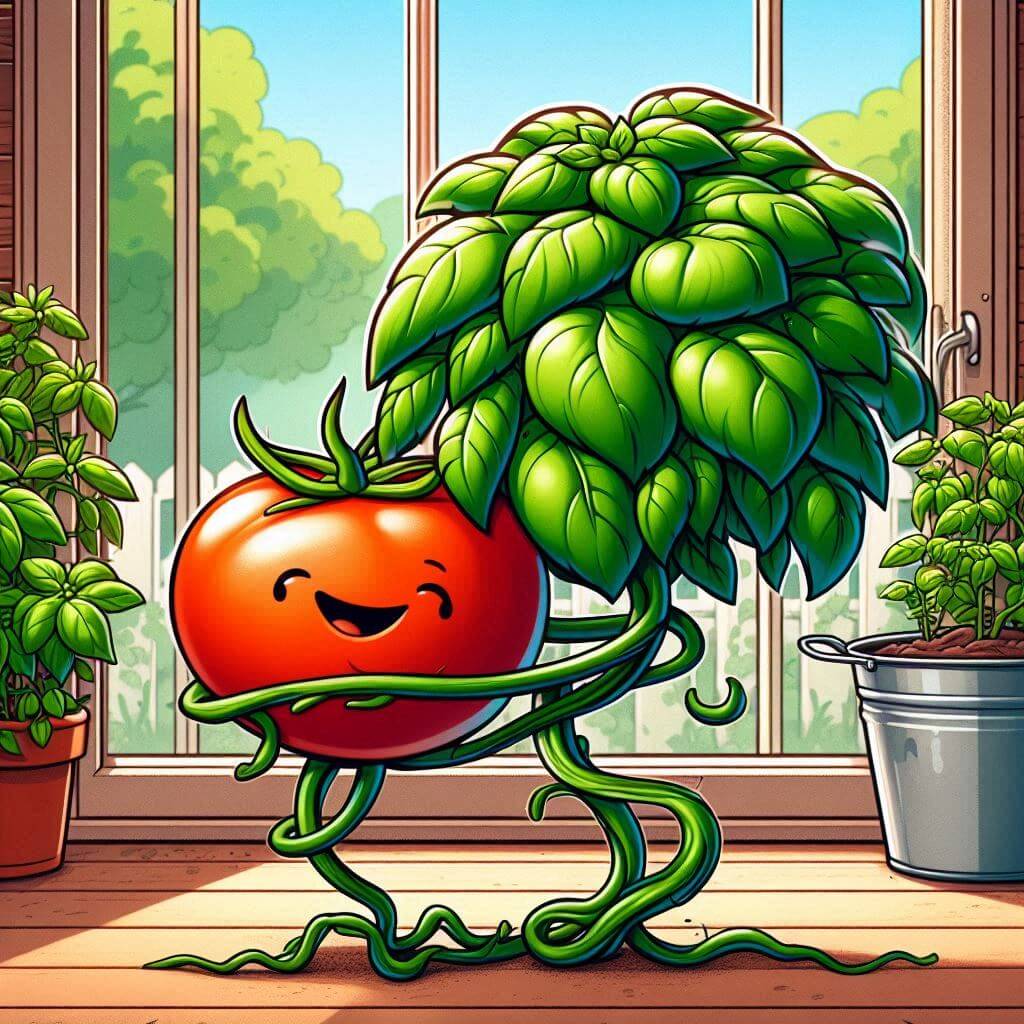Read by Michael Flamel

I’ve always had a soft spot for basil. There’s something magical about this herb that brings a touch of Summer to every dish and garden. Whether it’s growing lush and green in my outdoor garden during the warm months or sitting pretty in pots on my windowsill in the Winter, basil never fails to add a burst of flavor and joy to my life.
A Brief History of Basil in America
Basil has a storied past that traces back to ancient times. Originating in India, basil made its way to Europe and eventually to America, where it quickly became a staple in gardens and kitchens alike. In America, basil found its way into the hearts and gardens of early settlers who cherished its aromatic leaves and versatility in cooking. Over time, it has become a beloved herb, grown both commercially and in home gardens across the country.
Growing Basil: A Gardener’s Delight
One of my favorite things about basil is how easy it is to grow. Whether you’re a seasoned gardener or a newbie with a green thumb, basil is incredibly forgiving and rewarding. I grow it outdoors in the Summer, where it thrives in the warm sunshine, and indoors during the Winter months, keeping my kitchen fragrant and my dishes flavorful year-round.
The Perfect Companion Plant
Basil isn’t just great for cooking; it’s also a fantastic companion plant. I’ve found that growing basil alongside my tomatoes creates a harmonious garden environment. The basil helps repel pests that love to munch on tomato plants, and some say it even improves the flavor of the tomatoes. Whether or not that’s true, I like to think my basil and tomatoes have a symbiotic relationship that makes my garden happier and healthier.
Harvesting and Storing Basil
Harvesting basil is a joy in itself. The best time to pick basil is in the morning after the dew has dried but before the sun gets too hot. This is when the leaves are at their most flavorful. I pinch off the leaves just above a pair of leaves or a node, which encourages the plant to grow bushier and produce more leaves.
For storage, fresh basil can be kept in a glass of water on the countertop for a few days or in the fridge wrapped in a damp paper towel. If you have an abundant harvest, you can dry the leaves or make a big batch of pesto to freeze for later use.
Cooking with Basil
Basil is incredibly versatile in the kitchen. Here are a few of my favorite ways to use it:
Pesto: A classic basil dish that’s perfect for pasta, sandwiches, or as a dip.
Caprese Salad: Fresh basil leaves paired with ripe tomatoes, mozzarella, and a drizzle of balsamic vinegar.
Herb Butter: Mix finely chopped basil into softened butter for a delicious spread.
Soups and Stews: Add basil towards the end of cooking to retain its bright flavor.
Cocktails: Basil adds a fresh twist to drinks like mojitos or basil lemonade.
Fun Facts About Basil
Did you know that basil is one of the most popular herbs grown in America? Both commercial farms and home gardeners adore this herb. Basil is also known for its numerous varieties, each with its own unique flavor profile. From the sweet and fragrant Genovese basil to the spicy Thai basil, there’s a type of basil to suit every palate.
Your Guide to Growing and Using Basil
If you’re as enchanted by basil as I am, I highly recommend checking out our basil growers gardening guide. It’s packed with information on the best varieties to grow, detailed growing tips, and some fantastic recipes to elevate your culinary creations. Whether you’re growing basil for the first time or looking to expand your herb garden, our guide has everything you need to make the most of this delightful herb.
Conclusion
Basil is more than just a plant; it’s a companion in the garden and the kitchen. Its vibrant leaves and aromatic presence bring life to any dish and joy to any gardener. So, whether you’re nurturing basil next to your tomatoes or snipping fresh leaves for tonight’s dinner, embrace the delightful adventures that basil brings to your gardening and culinary endeavors.
Happy gardening and happy cooking!


 Previous
Previous

